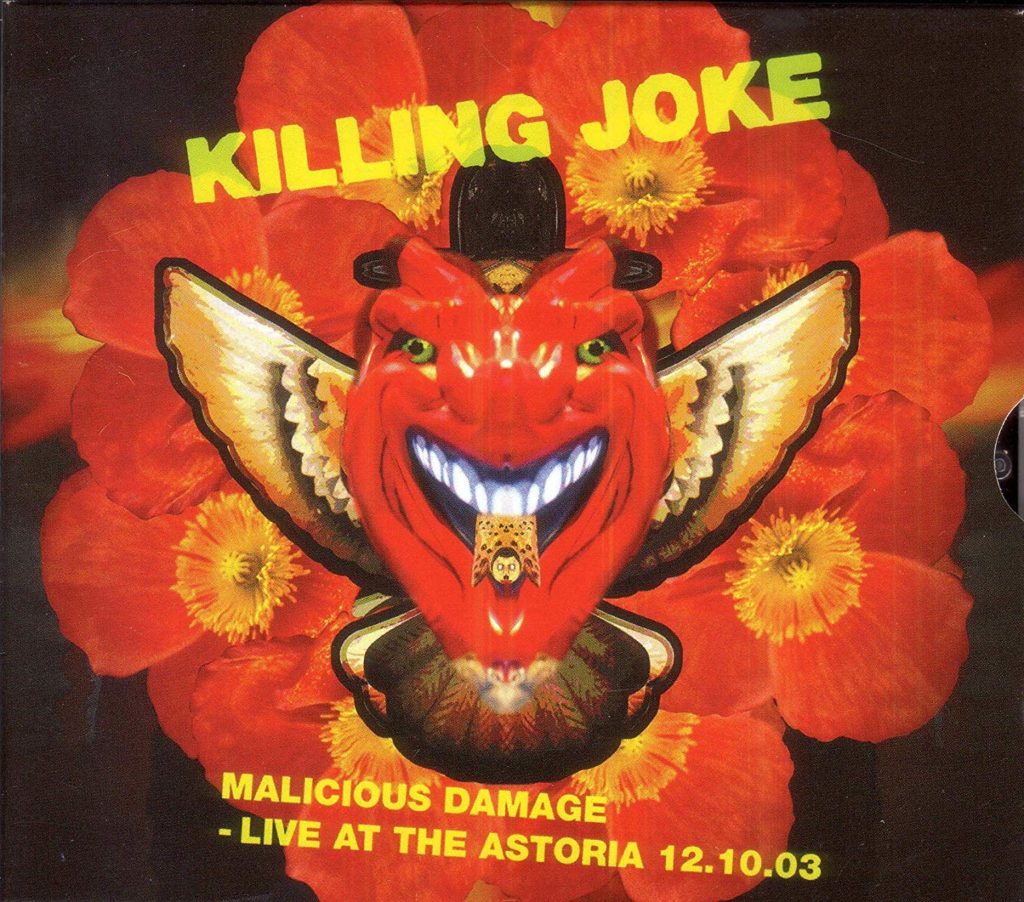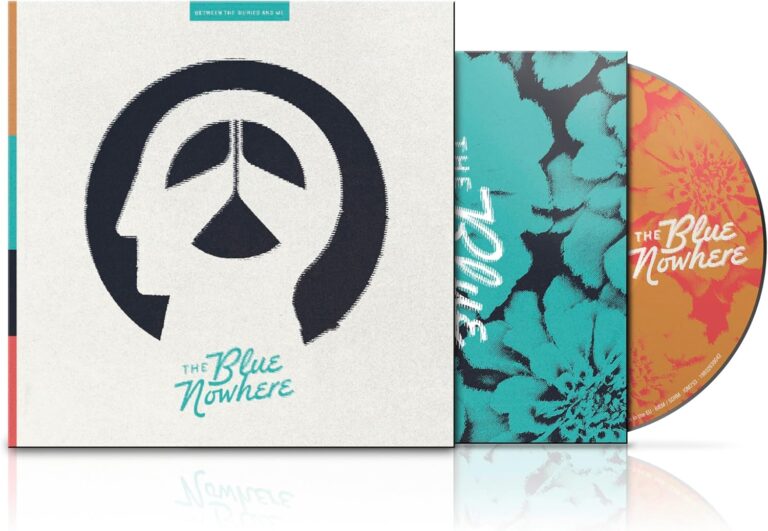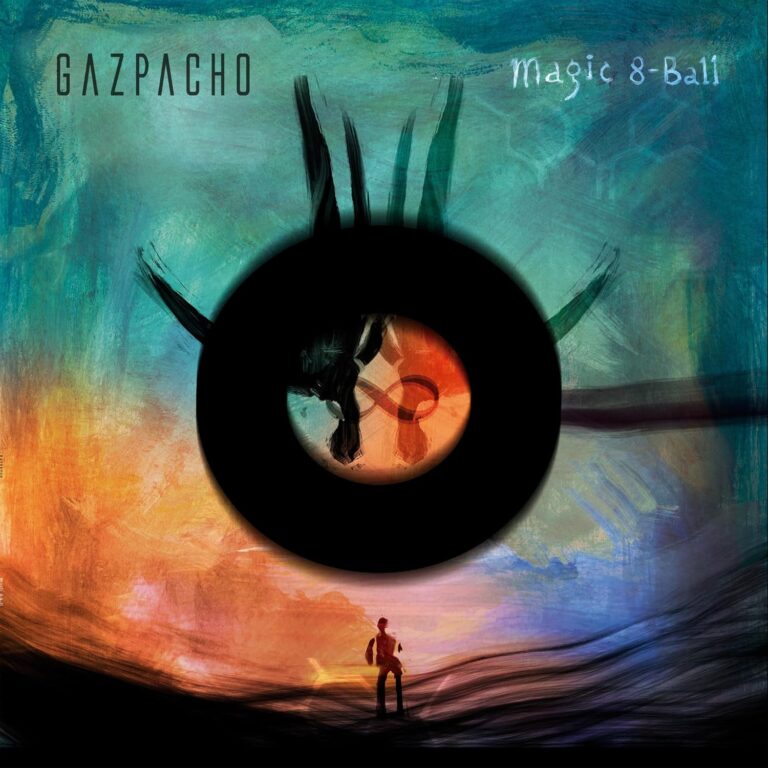
On record, Killing Joke have proved remarkably adept at self-editing; their bleak, icy observations riven with atmosphere and mercilessly honed to a fine point. On stage, however, the band raise the temperature considerably, welding tracks old and new into a solid tsunami of sound that blazes from the stage. Live recordings, inevitably, don’t do the stage show full justice (unless you happen to have a 1000-watt sound system and an over-priced bar in your living room), but it is nice, nonetheless, to have a record of the band in full flow. This effort, tracked in 2003, features late-bassist Paul Raven (who tragically passed away in 2007) and also captures the brief, year-long tenure of Ted Parsons (prong) behind the kit. Fired up by the war in Iraq and with a blistering new album (the second self-titled effort recorded with long-time fan Dave Grohl on drums) in the racks, the Killing Joke of 2003 was a tough outfit indeed and Malicious damage sees them laying waste to the London Astoria with considerable glee.
Directly licensed by the band, malicious damage is an admirably, even surprisingly, raw document of the band’s intense live show. Very clearly mixed from the original source with no studio-based doctoring, Steven Graham has done a fantastic job of bringing out the various instruments and, although typical live-recording issues surface (occasional losses of clarity; an over-emphasis on the drums in places), the professional-bootleg sound actually suits the band far more than a spuriously perfect studio sheen ever could.
Opening with the mid-paced communion is inspired. Jaz’s vocals, a strained roar, stand out over the industrial-strength march the band lay down, with Nick Walker’s keyboards adding a touch of wonder even as Ted Parson’s thunderous drums nail the beat to the floor. It also segues perfectly into a ragged, glorious requiem, although it pales in comparison to the seething, metallic horror of total invasion, one of the band’s most unhinged and disturbingly punishing pieces of music, riven with feedback and presided over by a whispering, sneering Jaz. As such, it’s almost a relief when the familiar strains of wardance arrive to leaven the atmosphere, although it’s only a brief reprieve before a condemnatory and lengthy blood on your hands is unleashed, the feedback-strewn grind delivered with considerable venom. Similarly, change, with its sampled sirens and awkward time shifts, does much to underscore the band’s bullish state of mind in the wake of the Iraq invasion, with seeing red a furious and direct assault from the then-recently-released self-titled effort. A trip down memory lane to What’s THIS for…! Sees the tribal percussion of the fall of because given considerably more heft than its recorded counterpart, before the first disc comes to an end with a sneering follow the leaders.
Opening up the second disc, the eerie strains of an extended version of the death and resurrection show comes across as an incantation, Jaz’s vocals undoubtedly coupled with the hypnotic stare of a cobra poised to strike. The sheet metal guitars, permanently verging on the edge of feeding back into the abyss, are terrifyingly potent here, and remain so on a hyperactive kings and queens. If the opening of empire song is lost in a sea of reverb and noise, it soon comes into focus as Ted’s relentless percussion imposes the necessary discipline and then the band are tearing into the wait the band gleefully reclaiming it from its (then recent) battering at Metallica’s hands and restoring its black, industro-metal heart. With the dizzying tech-metal of whiteout showing Rammstein how it’s done, the band head into ever darker territory, frenzy every bit as disconcerting as its Hitchcockian namesake, the band bringing the main show to an end with a deranged Pssyche that tramples the studio version into the ground. The band return for a two-song encore, the first track of which is an explosive asteroid unfortunately rendered tough listening thanks to a sludgy, bass-heavy mix. Sound issues are fixed, however, by the time we get to the Eastern strings of a devastating Pandemonium, which brings the live show (and this double CD set) to a suitably atmospheric close.
The reality is that Malicious Damage is first and foremost for the fans. Whilst an argument could be raised that the band’s unhinged stage performance would serve to attract the uninitiated, the album works much better as a live counterpart to the studio versions and as a memento to the tour. As such, the album is largely essential for fans and ephemeral for everyone else. One aspect that does feel like a missed opportunity is the packaging. Where the albums feature great artwork (and, in the case of the reissues, fascinating liner notes), malicious damage is rendered with grainy photography and faux-hand-written song titles. It recalls the pre-internet days of trawling local markets for dodgy bootlegs which, perhaps, is the point, although a booklet with better photos would surely be better. Nevertheless, for The Gatherers this is an essential record of a monumental tour. 8




